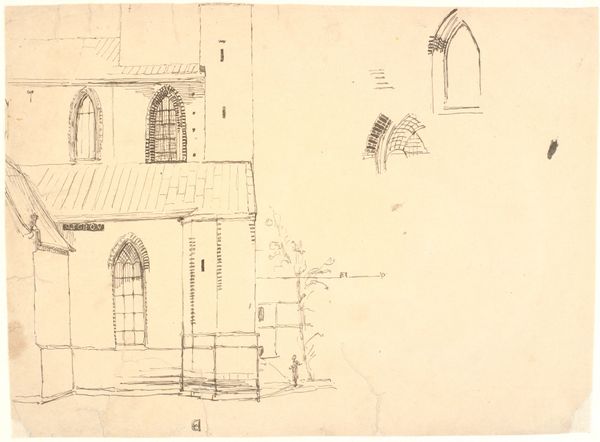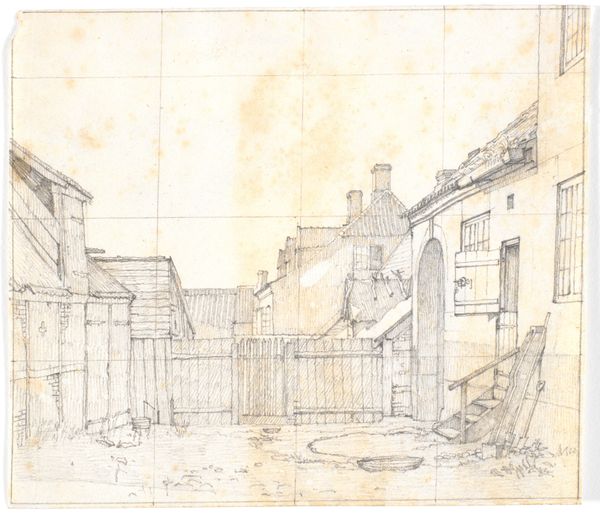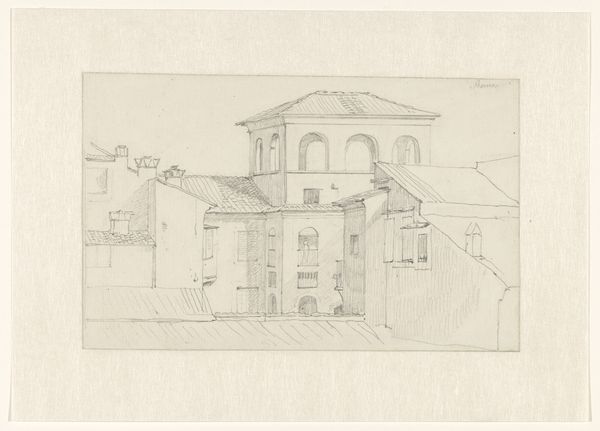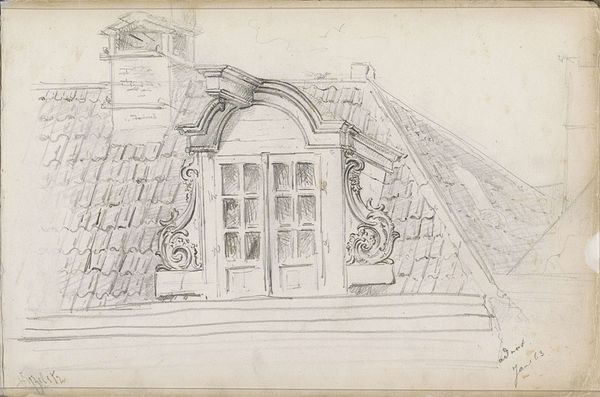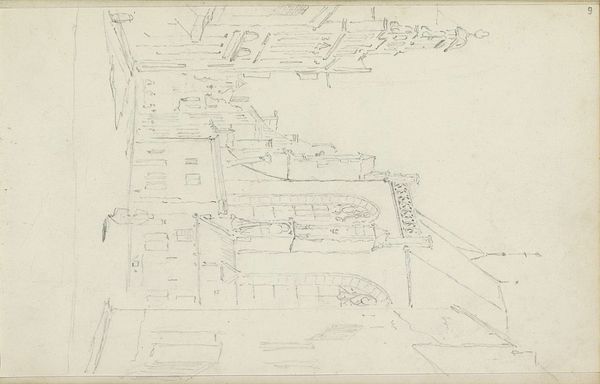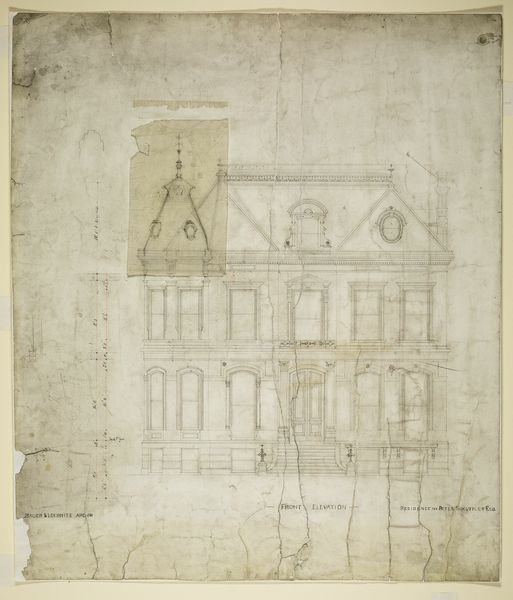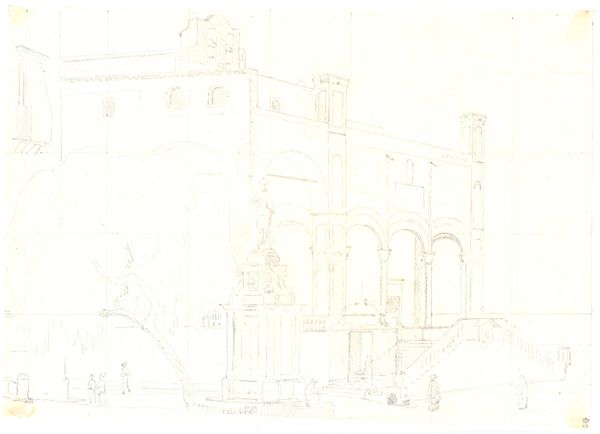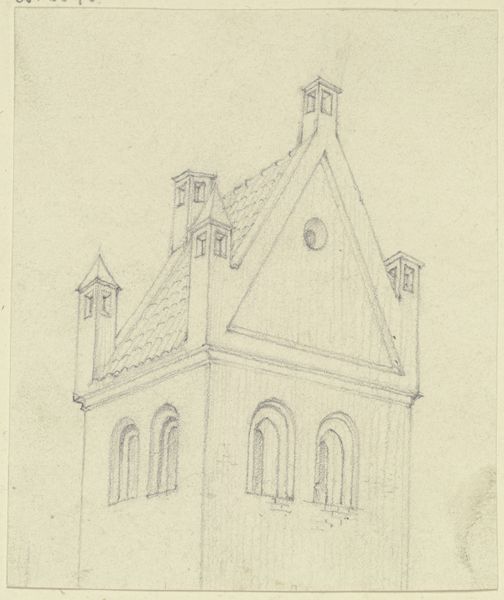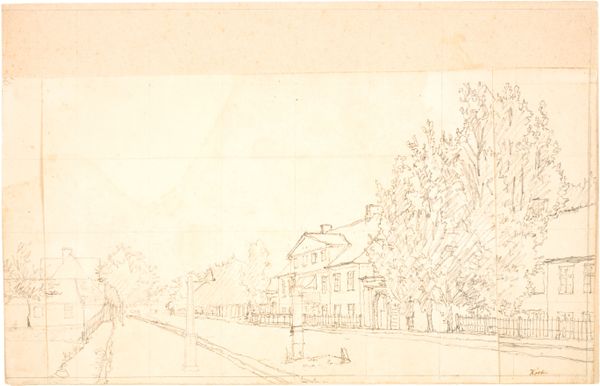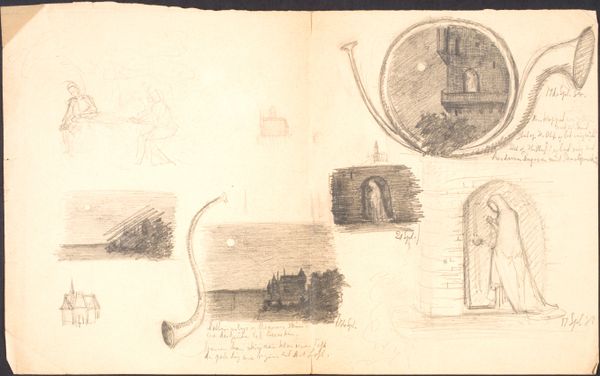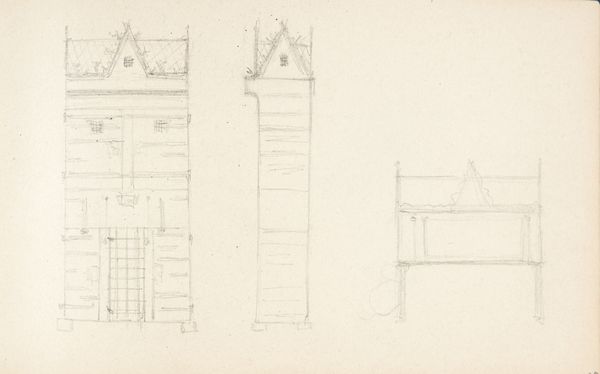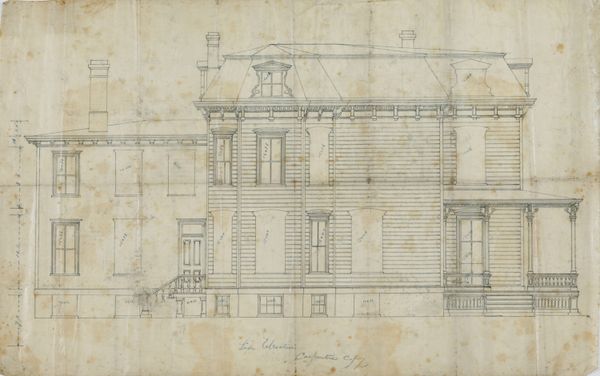
Forskellige udkast til et hus i en slags halv-gotisk smag 1831 - 1852
0:00
0:00
drawing
#
architectural sketch
#
landscape illustration sketch
#
drawing
#
aged paper
#
incomplete sketchy
#
personal sketchbook
#
architectural drawing
#
architecture drawing
#
botanical art
#
watercolor
#
warm toned green
Dimensions: 184 mm (height) x 231 mm (width) (bladmaal)
Curator: We're looking at "Forskellige udkast til et hus i en slags halv-gotisk smag"—"Various Sketches for a House in a Sort of Semi-Gothic Style"—by Dankvart Dreyer. The work, held here at the SMK, dates from 1831 to 1852. Editor: It feels like uncovering someone's secret architectural daydreams, doesn't it? It's wonderfully sketchy, light, and makes me think of whispered aspirations more than blueprints. Curator: Yes, the sketch invites speculation. Considering Dreyer’s broader artistic focus on landscape, we can read this as more than just architectural plans. It's revealing to consider the social dimensions of architecture during this period, and the growing bourgeoisie class aspiring towards these traditionally aristocratic gothic styles in their private residences. The incomplete nature allows us to see the constructedness of those aspirations. Editor: Constructedness, totally! The Gothic was, after all, this big statement. For Dreyer, usually so attentive to the subtleties of the natural world, to play with Gothic...it's like he’s riffing on a theme, almost ironically. Or maybe he just fancied a bit of playful rebellion himself? Curator: That rebellion might also speak to questions around national identity in 19th-century Denmark, and the reinterpretation of historical styles in light of burgeoning nationalist sentiment. Gothic architecture wasn't just about aesthetics; it was imbued with cultural and political significance. Editor: It really speaks to that delicious tension between what you build and what you feel, and how much they influence one another. Look at those pale greens...there's a sense of longing, of imagining oneself living inside of something grand, but the reality’s a work-in-progress, maybe forever out of reach. Curator: Precisely. This interplay underscores the painting’s ability to engage with notions of aspiration, identity, and belonging – not just in relation to architecture, but to society itself. It also poses a fascinating question regarding Dreyer's views of the rapidly changing Denmark he lived in, making his piece a powerful socio-cultural artifact, really. Editor: It feels deeply intimate – like a peek into a sketchbook brimming with more than just technical details. It reminds me that behind every grand facade, there's the messy, vulnerable yearning of an artist—of all of us.
Comments
No comments
Be the first to comment and join the conversation on the ultimate creative platform.
